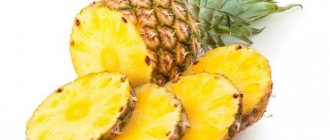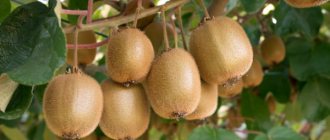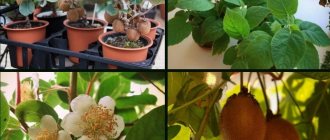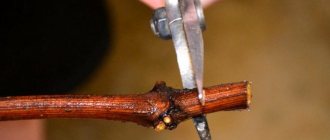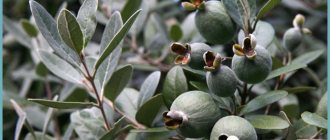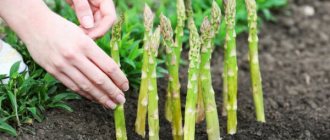What kind of exotic plants do restless flower growers grow on their windowsills? Lemon, orange, tangerine, pomegranate, persimmon, and avocado trees in flower pots and tubs no longer cause surprise. Many people try to plant mangoes. There are positive examples, but you need to take into account that a seedling grown from a seed will not bear fruit: it must be grafted (this is how varietal seedlings are prepared in nurseries). But as a decorative foliage indoor plant, mango can well decorate the interior of spacious residential and office premises.
In the southern regions, heat-loving trees are often used in the summer as spectacular natural design elements of open terraces, loggias, and patios.
Indian mango (Mangifera indica L.) is an evergreen tree that grows in the tropical rainforests of America and Africa, cultivated on an industrial scale in India, Pakistan, Indonesia, and Asian countries (China, Vietnam, Thailand). In nature, the plant can even reach 45 meters in height (usually 10-20 m). Grown at home, taking into account the obligatory crown-forming pruning, as a rule, does not exceed 2 m.
Mango in natural environment
In nature, mangoes can reach 30 meters in height.
In cramped apartment conditions, the plant, as a rule, does not grow higher than 2 meters. The mango has a spherical crown with elongated leathery leaves. The foliage is pinkish when young and turns dark green over time.
The flowers are small, white or pink, collected in inflorescences up to 40 cm long, the aroma is similar to that of lilies. Flowering from December to April. Fruiting begins at 5-6 years of plant life.
Types and varieties
There are two types of origin:
- Indian mango is distinguished by the bright red color of its young shoots, the juicy color of the regular shape of the fruit and its intolerance to moisture.
- Philippine or South Asian mango with light green growths and oblong fruits of the same color. They are more resistant to moisture and more resistant to climate change.
Each species has many varieties. According to some sources - about 500, according to others - about 1000. Varieties differ in the shade of inflorescences, size, shape, color and taste of the fruit. When grown on an industrial scale, dwarf varieties are preferred. They are also recommended for home breeding.
How it grows
For the mango tree, it is desirable to create conditions as close as possible to its homeland, heat and humidity. Then the plant will delight you with abundant greenery and flowering.
At home, it is very difficult to wait for fruits, since the conditions are often not suitable for the plant. Despite this, the tree actively grows, stopping growth during the dormant period.
Height
Mango grows very quickly. At home, the tree can reach 45 m. To keep the tree at the desired level, regular pruning and pinching is carried out. In a year, the plant can reach a height of more than 1 meter. When planting mangoes, it is necessary to provide sufficient space in the room.
Is it possible to get mango fruits at home?
Mango looks great as an ornamental plant. But many gardeners sooner or later wonder how to get a harvest. In an apartment, mangoes begin to bloom, as a rule, by 5-6 years. But fruits appear only on grafted trees. To do this, you will need a branch of an already fruit-bearing tree. There must be at least 3 live gems.
Growing mangoes from seeds is easy. In most cases, the seed from a store-bought fruit germinates successfully. To bear fruit you need to be vaccinated. Mangoes cannot be planted outdoors and can only be grown as an indoor plant.
Application
Animals should not be fed mango leaves due to their high content of essential oils. Burning mango leaves releases toxic gases that can cause eye and lung irritation. Mangoes are eaten at any stage of ripeness. In the East, unripe mangoes are pickled in oil with salt and spices. Unripe fruits are used to prepare side dishes for meat and fish dishes.
The substances contained in the ripe fruit strengthen the heart, improve brain function, and are good for vision, pancreas, kidneys, and digestive tract. One mango contains almost half of the daily fiber requirement. Mangoes are eaten fresh and canned. In Indian medicine, practically all parts of the mango tree are used - fruits, seeds, flowers, bark.
Currently reading:
- How to grow Chinese cabbage in open ground
- Using hydrogel in open ground for plants
- Increased potato yield using Dutch technology
- Timely application of dolomite flour for the harvest
Share the news on social networks
About the author: Lyudmila Vasilievna Nosikova
Agronomist of the state agricultural enterprise "Garovskoe" of the Khabarovsk region of the Khabarovsk Territory.
Growing mangoes indoors
The seed should be planted almost immediately after it is removed from the fruit. In this case, you should definitely choose a ripe mango. It is very easy to check whether the fruit is ripe enough. Thus, in a suitable mango, the pit can be separated from the pulp very easily. First rinse well and then use a sharp knife to remove the remaining pulp. After this, the prepared seed is carefully divided, thereby accelerating the germination process:
- If the bone breaks smoothly, you should remove the shell from it and carefully pull out the inside, like beans. Next, it should be treated with fungicides - agents that can resist the development of harmful fungi and spores. In the event that there is not one, but several embryos inside, it is necessary to choose only one of the greenest and smoothest, since its chances of germination are greater than those of the others.
- If it is very difficult to break the shell, no effort is required, otherwise the inside may be damaged. Mango seeds should be placed in a container that should be transparent, and water at room temperature should be poured into it. For the bone, choose the brightest place on the windowsill. This means it should lie there for several weeks. But do not forget to change the water every two days, otherwise it will turn sour.
So you need to choose a suitable vase. Due to the fact that a mango tree in nature can reach a height of 10-45 meters, the container for planting should be immediately large enough. In this case, by replanting the plant, thereby injuring the root system, you will lose less. Be sure to provide good drainage at the bottom of the container; for this, use special granules or small crushed stone. The drainage layer can prevent stagnation of liquid in the soil, and therefore the appearance of rot on the roots. For planting, you can use purchased universal soil, but keep in mind that it must be neutral in acidity.
To measure soil acidity, you can use a specially designed device called a soil pH meter or pH meter. It can also be replaced with disposable paper indicators. They change their color after contact with acidic soil (this happens within 1-15 minutes, and the time depends entirely on the indicator manufacturer).
There are two ways to plant:
- put it sideways - in case you don’t know exactly where the bottom is and where the top is;
- placement horizontally - if there is already a small escape.
The bone should not be completely covered with soil; a fourth of it should rise above the surface. After planting, fill the soil well and if it has settled enough, you will need to top it up a little to the required level.
To create the most suitable conditions for germination, you need to cover the top container with glass, cling film or ½ part of a plastic bottle. Do not forget to ventilate the mango; to do this, slightly lift the edges of the shelter every 2-3 days. This will help you avoid bone destruction.
A south-facing window sill is ideal for placing the pot, as the plant requires the most light. After 2-3 weeks, a sprout usually appears and the mango begins to grow. Next you need to remove the shelter from the container.
How to plant a seed correctly
To grow a tree indoors, you need to choose a ripe mango, preferably an overripe fruit, in which the seed may burst and the sprout will break. You should cut the fruit lengthwise, turning the halves of the fruit in opposite directions to release the pit. Then rinse the seed with water and slowly plant it in a 9 cm pot (humus with grass). You can make a greenhouse on top (for example, from a bag).
Advice! If the bone is intact, experts recommend soaking it for 2-3 days in a solution of potassium permanganate or water and waiting until it germinates. You can open the bone and take out the contents - the embryo is shaped like a bean. This way it will germinate faster. Fruit seeds cannot be stored for a long time; the quality of the seedlings deteriorates sharply.
At an average temperature of about +23 degrees, seedlings will appear in 3-4 weeks. The bush will need to be replanted annually into a larger container; the soil composition is the same. After 3-5 years, when replanting, small pebbles or a mixture of coarse sand (river) should be placed on the bottom.
Choose a sunny place; if there is a battery, you will need frequent spraying with warm water. Suitable fertilizers are needed for palm trees and oleander bushes.
A bush grown from a mango seed can be given different shapes - a ball, a pyramid or a cube. He will delight you with flowers only in a few years. You can see different varieties of mangoes in our photo gallery or on the Internet.
Seasonal calendar
Flowering of indoor mango begins in December and continues until April. In our country, this period begins with the arrival of spring. The fruit itself takes up to 6 months to form and mature. In Russia, the dormant period for mangoes is winter. At this time, it is necessary to slightly reduce watering the plant, do not forget to spray, and in winter this should be done with warm water.
In the spring, with the onset of flowering, it is necessary to start feeding the plant and continue throughout the summer until the plant forms fruits. After the harvest has ripened, fertilizing should be reduced, and with the onset of winter completely eliminated.
Where to get planting material
Mango is propagated by cuttings and seeds. Seedlings of this tropical plant are not cheap in nurseries. It is much easier to try growing it yourself from seeds. To do this, just buy a mango at your nearest store.
When choosing, you should give preference to fruits with elastic skin, without signs of damage or shock. The pulp of a suitable fruit is slightly crushed when pressed and is quickly restored. Mango should have a fruity aroma without impurities.
If you can't find ripe fruit in the store, you can try ripening it at home. To do this, wrap it in newspaper and place it in a dark place. As a rule, ripening occurs on days 5-6. You can speed up the process by placing an apple or banana next to the mango.
Requirements for containers and soil
When choosing a container for planting, it is necessary to take into account the following characteristics: the plant has a fundamental, rather long root system, so it is necessary to immediately prepare a tall and spacious pot, especially since it is not worth replanting a young seedling often. It won’t even work out too big: the roots in it can rot due to insufficient ventilation through the soil. The pot should have drainage holes (plastic ones usually have traces of holes that need to be poked with a hot knife or nail) and a tray.
Mango loves loose, fertile soil
For planting, you can buy ready-made soil with a neutral alkaline reaction, or you can mix garden soil with peat, sand and vermiculite (perlite) yourself to increase looseness, water permeability and breathability.
Before filling the pot with earthen mixture, do not forget about the obligatory drainage layer, which is made from expanded clay, small pebbles and broken bricks 5 cm high.
Preparing for landing
The easiest way to plant a mango is to bury the seed in the ground and wait for the sprouts to appear. This method has a serious drawback. Remaining pulp on the seed can cause rotting, and the seed simply will not germinate. Whatever happens, preliminary preparation of planting material should be carried out.
The shell of the mango seed is quite dense. It must be carefully opened with a sharp knife. The extracted core is immersed in a weak solution of potassium permanganate for 12 hours. After processing, the seeds are lightly dipped into a container with slightly damp sawdust. The future plant is placed in a warm, dark place, checking the moisture content of the sawdust from time to time. After 2-3 weeks, when shoots appear, you can transplant the plant into the ground.
The extracted bone should not be dried. The longer it is left outdoors, the less likely it is to germinate.
Selecting a seed
In our region, you can grow a mango tree only from the seed. It is important to choose the ripest fruit for planting. After all, only in ripe fruits is it prepared for germination.
Pay attention to the quality of the mango seed
The chances of getting a successful sprout will increase significantly. You can press the mango gently with your fingers. When the surface of the fruit quickly recovers and is not deformed, this indicates the ripeness of this variety.
Experts advise determining the freshness of a mango by smell. There should be a pleasant, tasty aroma. But the presence of an alcohol smell should immediately alert you, because... it is spoiled fruit.
Note! It is worth purchasing a mango fruit that has an ideal surface.
It should be free of stains and there should be no rot present.
Landing rules
The hatched seeds are planted in a container with soil, leaving 1/4 of the seeds above the surface. The seedling is lightly sprinkled with soil and watered abundantly with warm, stable water.
The pot is covered with foil, a glass or plastic bottle and placed in a warm, bright place. Once every 2-3 days, the seedlings need to be ventilated for 5-10 minutes. After the first true leaves appear, the aeration time begins to gradually increase, thereby hardening the plant.
Plant care
Further cultivation of seedlings is not particularly difficult. The main thing is to provide:
- sunny location - south window sill;
- regular watering - 1-2 times a week with stabilized water at room temperature;
- daily foliar spraying.
- This treatment is recommended for all non-hairy indoor plants from the tropics.
Mango likes to water it with water from a spray bottle and shower head, wipe the leaves with a damp cloth, in the summer outdoors on the balcony or terrace.
Feed the tree with a universal complex fertilizer for indoor plants when watering.
In winter, a period of rest is not required, but additional lighting with a phytolamp is welcome.
To form a crown at the 8-leaf stage, it is necessary to pinch the tip of the shoot.
Annual spring pruning is carried out when the plant reaches one and a half meters in height.
For the first three years, the tree is replanted once a season, collecting a pot or tub of the required (larger) size, then it is replenished once every three years.
Features of care after purchase
After purchasing, the mango seedling needs to be replanted. The container for the tree should be large and spacious. The plant is installed on a lighter windowsill, it is better if it is located on the south side. Comfortable temperature is maintained at a minimum of 20 ° C, a minimum of 18 ° C.
In a pot, you must keep the soil moist and regularly spray the plant; mangoes love hot and humid climates.
Soil and pot
The pot for the mango tree should be spacious, because the well-developed root system of the plant requires space. Often a tropical plant should not be replanted - it does not like it.
The bottom of the pot is covered with drainage, small pebbles or expanded clay, up to 6-7 cm high. Drainage will not allow moisture to stagnate, which means it will protect the roots of the mango tree from rotting and it will provide them with oxygen.
The soil for mangoes is chosen to be light and neutral in acidity. Land can be purchased. If it is a universal soil, then sand is mixed into it in a ratio of two to one. For succulents, soil is suitable, to which small pebbles are added.
It is not difficult to prepare the soil for your plant yourself. Mixed peat - 1 part, fertile soil - 2 parts, coarse river sand or coconut fiber - 1 part. The container is filled two-thirds with earth, then moistened.
Temperature
It is best to place a container with a mature and grown shoot on the sunny side of the apartment. The light falling on the plants should be diffused. It is important to avoid direct sunlight as this can cause sunburn.
The best time to plant mangoes is late spring. In summer, the plant will receive enough heat and light and will be able to grow stronger. In winter, the sprout must be illuminated with a phytolamp. Daytime must be at least 14 hours.
The optimal ambient temperature is considered to be 24-27 ° C. In the warm season, the plant can be taken outside or to the balcony, placing the pot away from drafts.
Light
Mango is a light-loving plant. It is best to place it on a windowsill with good lighting. The main thing is that there is enough light. Additional sources of light and heat can be used to create a favorable habitat for the plant. I did this and ended up with great results.
Although growing mangoes indoors requires plenty of light, it is important to protect the fertile plant from direct sunlight. Direct rays during the day can burn the leaves. This can be avoided by using a small case. You can remove the tree completely, but the main thing is that no shadow falls on it.
Air humidity and watering mangoes
The mango tree not only needs warmth, but also the right humidity. Its level cannot be less than 70%. To maintain the required percentage in the household space, special air humidifiers are used and pots of water are placed.
Dry topsoil indicates that the mango tree needs watering. Usually two waterings per week are enough, more on hot days. The water for the indoor plant is predetermined and heated to room temperature. Too wet soil can cause rotting of the roots and trunk of the mango tree.
You can prevent moisture evaporation by mulching the soil with rotten wood shavings, sawdust, or well-rotted humus.
It is best to avoid spraying your home-grown mango tree, or do it infrequently and carefully, as this may cause mold growth. It is better to wipe the leaves of the plant with a damp cloth.
Top dressing
Feed mangoes every 2 - 3 weeks. Organic matter, nitrogen-containing preparations and vermicompost are replaced as fertilizers (vermicompost can be replaced with potassium humate or Epin solution). Mango grows well on ready-made citrus and palm complexes.
As a source of nitrogen you can use:
- 2-urea solution;
- ammonium nitrate;
- ammonium sulfate.
Organic fertilizer can be prepared at home. To do this, pour finely chopped nettles into a five-liter plastic container and add a handful of manure. The container is filled with water and left in a warm place for 5-7 days. The solution will be ready when the fermentation process has been significantly reduced. Before use, the solution is diluted with water in a ratio of 1:10. Such feeding is carried out in the summer.
Twice a year the plant is fed with humus. A groove is made in the ground along the edge of the container and filled with fertilizer. Sprinkle soil on top and lightly moisten.
Once every 3 months, mango leaves are sprayed with a solution of copper sulfate or boric acid.
Transfer
Mangoes are difficult to transplant. This causes stress to the plant, which may cause it to lose its leaves.
It is recommended to change the container no earlier than after a year, as the tree grows and gets stronger. Transplantation is carried out using the transshipment method. To do this, water the plant abundantly and leave for half an hour to soften the soil.
A drainage pad is placed in the new pot and lightly sprinkled with soil. The container with the plant is carefully turned upside down and the tree is removed along with the soil. Transplant into a new container and fill the voids with soil. The soil is well moistened. During the adaptation period, the tree is placed in a shaded place.
Formation
The plant responds well to formative pruning and actively restores the canopy. Training is carried out 1-2 times a year to adjust the size of the plant and maintain a beautiful shape. The procedure is carried out when the tree reaches 1.5 meters in height.
During pruning, all branches that thicken the crown are cut off. The central branch is shortened to the required length. The crown can be shaped in the form of a ball, a pyramid, or an enlarged bush. The pruning areas are treated with garden paint.
Every spring, the top of the plant is pinched to make the foliage fuller.
Planting
This is the main stage for which you need to prepare in advance. Follow the following algorithm:
- Choose a container that has a solid bottom but is deep enough as mangoes have long roots.
- Drainage is poured into the bottom of the container, and soil is placed on top of it. Choose a universal substrate that can be lightly fertilized with a mixture for palm plants.
- Make a hole in the soil and place the seed in it, root side down. A slightly hatched sprout should also be covered with about a centimeter of soil.
- Organize an improvised polyethylene greenhouse on top of the container. If the perimeter of the planting container is small, you can do the following: cut off the top part with a lid from a large plastic bottle and place it on top of your container. This way you can regularly ventilate the “greenhouse” by simply opening the lid for a while.
So you planted your tree. (You can take a photo as a keepsake so you can enjoy his successful growth even more later!)
All that's left to do is wait. At first, the mango grows very slowly until a sprout emerges from the soil. This usually takes about four weeks. “Having seen” the light, the plant will begin to stretch faster and faster. Don’t forget to water your “pet” more often, but in moderation and without turning the soil into a swamp.
How mango blooms and ensures fruiting
A tropical plant grown at home from a seed will remain an evergreen decorative element of the interior. To achieve flowering and fruiting of mango, it must be grafted. The tree blooms for three to four months, then juicy and fragrant fruits appear instead of flowers. The home environment does not always allow you to fully experience the aroma of tropical fruits. But patient flower growers are guaranteed real exotic beauty and the aroma of the tropics.
What and how to prune a mango
Before pruning, select two leaves to see how the healing process proceeds. The weakest defective leaves on the branch are selected. Determine the position of the cut in the center, leave 5 mm of the leaf on the handle. After some time, the cut will dry out and break on its own. The tree tolerates pruning well, and the crown structure improves.
You can create a wreath in any style for the interior of the house at the discretion of the owner. Young trees should be pruned as they grow. Pruning of mature trees is carried out after fruiting, when the load on the tree is minimal.
The tree grows about a meter in height, pinching shoots of growth. The rapid growth of crown branches begins - 5-6 main skeletal branches located at a significant angle from the trunk. The branches of the area and part of the upper shoots are cut off, since with good care the tree quickly recovers. The crown is adjusted to the desired shape several times a year.
In the first two years, when fruit ovaries appear on the tree, they need to be thinned out. In subsequent years, thinning will be unnecessary. Mango fruits are large and have significant weight, so extra branches will simply crack under the weight. All weak, lateral, low and intersecting branches are removed so as not to restrict the growth of large mangoes.
Is it possible to pinch
It is necessary to pinch the mango regularly, otherwise the tropical owner will stretch out greatly and no longer fit into the room. Wounds should be covered with garden paint. Pinching will help make the tree crown more luxuriant and dense.
Mango grafting
For this procedure you will need a sharp, sterile knife. They need to carefully cut the bud with wood and bark. On the grafted tree, you need to make a not very wide cut, reminiscent of the letter T. Then carefully tear off the edges of the bark and insert the cut bud. The cut should be carefully wrapped with soft tape and can be removed once the bud has grown.
The first flowering after grafting usually occurs after a couple of years. After 100 days (3 months) from the moment the flowers appear, you can enjoy the juicy, aromatic fruits. The grafted tree needs systematic feeding (watering should be carried out only with nitrogen-containing fertilizers and mixtures). Mangoes especially need fertilizer during flowering and ripening.
Such a beautiful tree can become a real decoration of any room, but only with proper care and creation of the necessary conditions. And in order to get sweet fruits, the plant will need to be grafted and then systematically fertilized.
Read more:
- How to grow a tangerine from a seed
Recently, it has become fashionable to grow exotic citrus trees at home: lemons, oranges, date palms, coffee trees, etc. The tangerine tree is no exception... - How to plant a mango seed
Mango is an evergreen tropical tree. If you want to grow it at home, you must understand that as a result you will get a very fast-growing and fairly large plant that loves warmth and light. ... - How to grow a date from a pit
Many, seeing unusually beautiful date palms with carved leaves, begin to ask themselves the question: “How to grow a date from a pit at home?” It’s not difficult to do and anyone can do it if they want...
ledy-life.ru
Common mistakes when planting mangoes
Failure to follow planting rules may result in the plant not germinating or quickly dying. The most common mistakes:
- Doesn't fit. If you bury the entire bone, the shoot will not have enough strength to break through the thick layer of soil. There is also a high probability that the seeds will simply rot. If the seeds are left on the surface, the seedling will not have enough moisture and will not germinate.
- Irrigation with cold water. Mango, like all tropical plants, is very sensitive to temperature changes. Low water temperatures can cause hypothermia of the plant and, as a result, loss of foliage. In addition, improper watering can provoke the development of fungal diseases.
- The wrong pot is being used. The capacity corresponds to the size of the plant. A vessel that is too deep causes the development of the taproot to the detriment of the above-ground part. The sprout will wither and die. In a container that is too shallow, the root system will not be able to fully develop.
- Unsuitable environmental conditions. For the first 2-3 months, mangoes are grown in greenhouse conditions. This will protect it from changes in temperature and humidity. The greenhouse is removed gradually, after the sprout has become stronger and accustomed to environmental conditions.
Planting a seed and getting the first few shoots is half the battle. In order for the plant to be healthy and pleasant to look at, it is necessary to strictly follow the rules of caring for the seedling.
Dwarf tree varieties
If you do not want to grow mango seeds yourself, then the nursery sells a prepared plant. In this option, you can definitely purchase a miniature type of tree.
The main advantage is the small height. Its roots will be fully prepared for further development. Often these plant varieties are preferred to be grown in the popular bonsai style.
It is worth noting that it is the dwarf varieties that are prone to fruiting.
Many people believe that mangoes can cause an allergic reaction. But actually it is not. Even allergy sufferers can contain it.
It is necessary to trim branches only with special gloves. This way, your hands will be well protected from leaf juices. After all, they can cause a rash.
Feel free to use mangoes as decoration for your home, cottage, or apartment.
Dangerous pests and diseases
Spider mites pose a great danger to tropical trees. Their sign is the nascent web. The cause may be high temperature and insufficient humidity. In the warm season - thrips feeding on the sap of leaves. This can be seen by discoloration or discoloration of the leaves.
- Common Mango Diseases:
- powdery mildew - white coating on leaves;
- bacteriosis - spots on leaves;
- anthracnose
Dry air turns the tips of the leaves brown. And in the cold the flowers will simply fall off.



